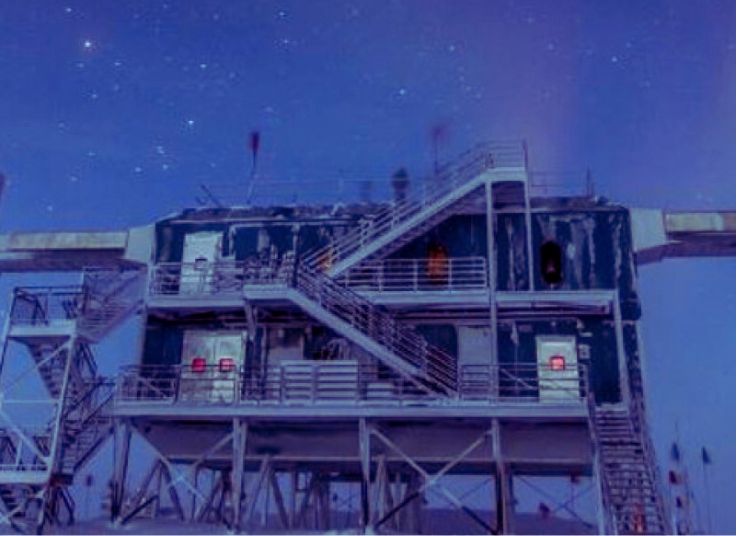Deep beneath the South Pole’s icy expanse lies a colossal neutrino observatory, the IceCube. Nicknamed the “neutrino catcher,” IceCube stands vigil, its sights set on elusive subatomic particles known as neutrinos.
These phantom particles, aptly named “ghost particles” due to their ability to glide through most matter unnoticed, hold immense scientific value. Unlike their flashy counterparts, photons (particles of light), neutrinos leave barely a ripple as they travel vast cosmic distances at nearly the speed of light. This very property that makes them ghostly – their minimal interaction with matter – also makes them incredibly difficult to detect. Trillions of these ethereal particles pass through us every second, completely oblivious to our presence.

Messengers from the Deep: Unveiling Cosmic Secrets
However, for astronomers, neutrinos are celestial messengers. Because they can travel through immense interstellar dust clouds that would obscure light, they act as cosmic informants, carrying whispers of powerful events occurring in the distant universe. These events could be anything from the explosive death throes of a massive star (supernovae) to the energetic jets spewing from the maw of a supermassive black hole. Understanding these phenomena is crucial for piecing together the grand narrative of our universe’s evolution.
There are three types or “flavors” of neutrinos: electron, muon, and tau. While IceCube has previously detected other neutrino flavors, capturing tau neutrinos would be a significant breakthrough. These elusive particles are even less likely to interact with matter than their electron and muon counterparts. Imagine trying to catch a wisp of smoke compared to a speeding bullet – that’s the difference in detectability between these neutrino flavors.
A Landmark Discovery: Unveiling the Secrets of Tau Neutrinos
The recent detection of seven tau neutrino candidates by IceCube has sent ripples of excitement through the scientific community. If confirmed, it would be a landmark discovery. These ghost particles could reveal details about previously unseen cosmic phenomena, providing invaluable insights into the violent and energetic processes shaping our universe. Imagine peering through a previously opaque curtain, witnessing the unseen forces that govern the cosmos. The findings would also solidify IceCube’s position as a powerful tool for future astronomical discoveries. By perfecting its ability to snag these celestial phantoms, scientists could unlock a treasure trove of information about the universe’s most enigmatic events.
A New Era of Discovery: Unveiling the Universe with Ghostly Messengers
The detection of tau neutrinos is a significant step forward in our quest to understand the unseen universe. These ghostly messengers, once phantoms flitting through the void, are now emerging as powerful tools, promising to shed light on the grand narrative of our cosmic existence.



















